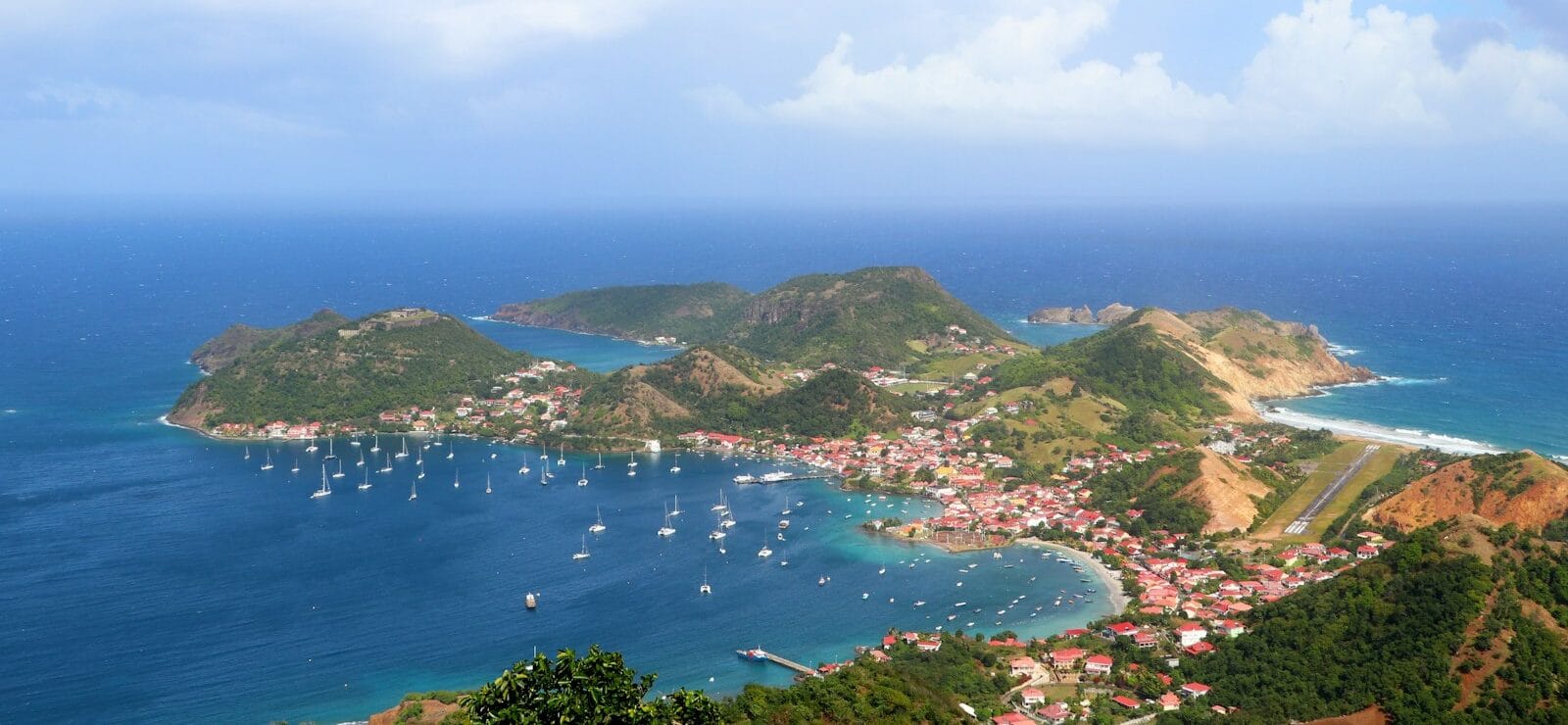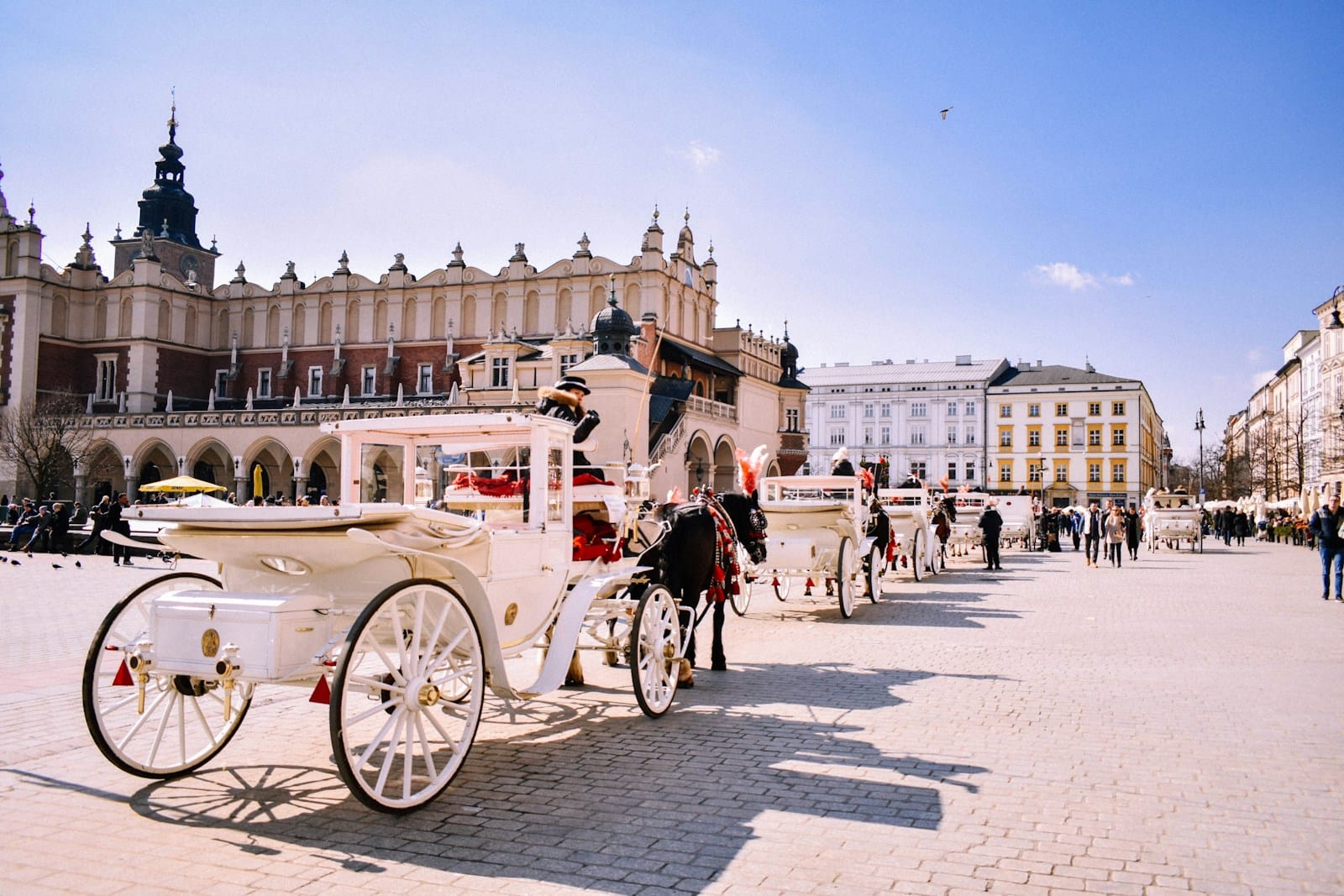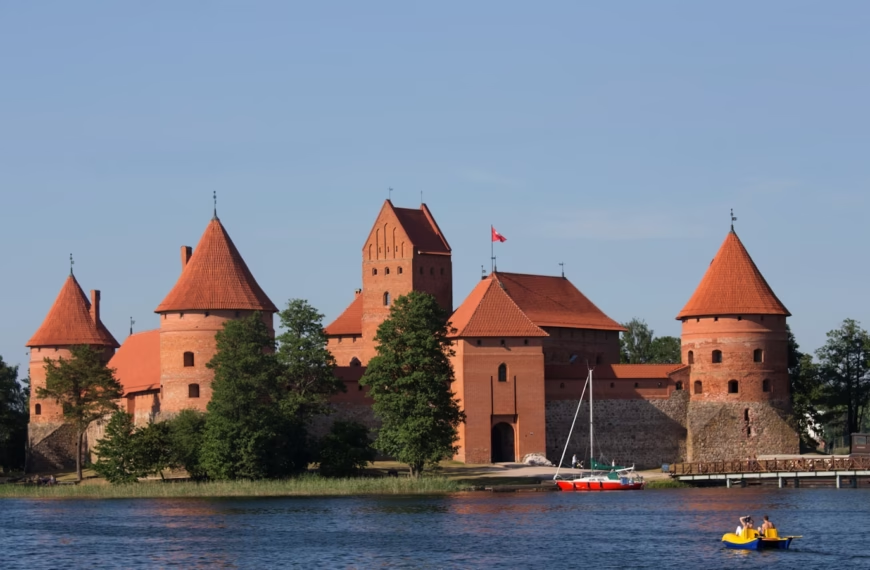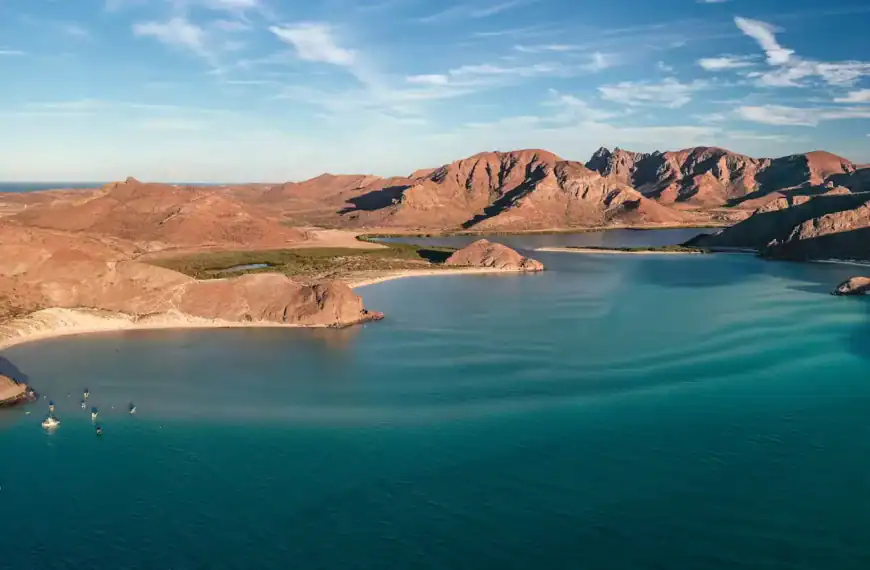Guadeloupe Travel Guide: Islands of Fire, Flavor & French-Caribbean Flair
Intro to Guadeloupe Travel Guide
Shaped like a butterfly in the French Caribbean, Guadeloupe offers a mesmerizing mix of volcanic peaks, lush jungles, and golden beaches. This overseas department of France blends Creole culture with European charm, creating a destination where rainforests meet rum distilleries and beach days end with baguettes and zouk music.
Start planning your journey with our complete Guadeloupe Travel Guide — covering the best time to visit, travel cost in Guadeloupe, top places to visit, and unforgettable Guadeloupe tours across its islands.
Looking for immersive Guadeloupe tours? From volcano hikes and spice markets to island hopping and coral reef snorkeling, discover epic adventures on our Guadeloupe Tours page.
Where to Go in Guadeloupe
Basse-Terre | Deshaies | Gosier | La Désirade | Les Saintes | Marie-Galante | Pointe-à-Pitre | Sainte-Anne | Saint-François | Trois-Rivières
💡Quick Facts:
Destination: Guadeloupe
Continent: North America (Caribbean)
Country: Overseas Department & Region of France
Area: 1,628 km² (629 mi²)
Population: ~395,000 (2025 est.)
Density: ~243/km²
Capital: Basse-Terre (administrative); Pointe-à-Pitre (economic hub)
Regions/Subregions: Basse-Terre, Grande-Terre, Marie-Galante, La Désirade, Îles des Saintes
Official Language: French
Regional Languages: Antillean Creole widely spoken; English in tourism zones
Currency: Euro (€)
Time Zone: AST (UTC-4), no DST
Airports (Main): Pointe-à-Pitre International (PTP), Marie-Galante (GBJ), Les Saintes (LSS)
Climate: Tropical — warm year-round, wet season Jun–Nov
Known For: Volcano La Soufrière, beaches, rum distilleries, waterfalls, Creole culture, carnival celebrations, scuba diving
🛂Arrival Info:
EU/EEA Nationals: Entry with ID card or passport, no visa.
Visa-Free Countries: US, Canada, UK, Australia, and many others (up to 90 days, as part of Schengen/France).
Schengen Rules: Guadeloupe applies French visa policy; stays count separately from mainland Schengen.
Cruise Arrivals: Major port at Pointe-à-Pitre.
Visa Info: French Government Visa Portal
🏥Health Info:
Recommended Vaccines: Routine vaccines, Hepatitis A, Hepatitis B, Typhoid.
Mosquito Risks: Dengue, Zika, Chikungunya present; use repellent.
Healthcare Access: Good hospitals in Basse-Terre & Pointe-à-Pitre; clinics in smaller islands.
Emergency Number: 112
Insurance: Strongly advised for evacuation or inter-island transfers.
🚑 Check travel insurance options for travel emergencies, delays, and medical needs abroad — Get coverage here
💉 Stay Informed with Official Updates: WHO – International Travel & Health | CDC – Travel health updates
🚨Travel Advisory:
General Safety: Relatively safe; petty theft in tourist zones.
Risks: Hurricane season Jun–Nov; occasional strikes may disrupt services.
Crime Level: Low to moderate; caution in urban nightlife areas.
Civil Unrest: Some protests/strikes tied to French politics.
LGBTQ+ Safety: Protected under French law; safe in general.
🌍Track Real-Time Official Updates: US Travel Advisory | UK Foreign Travel Advice | Government of Canada | NZ SafeTravel
🥳Holidays:
January 1: New Year’s Day
February/March: Carnival (dates vary)
May 8: Victory in Europe Day
July 14: Bastille Day
August 15: Assumption of Mary
November 1: All Saints’ Day
December 25: Christmas Day
💰Visitor Info:
Currency: Euro (€).
Payment: Cards widely accepted; cash useful for markets.
ATMs: Available in towns and resorts.
Tipping: Service included, rounding appreciated.
Tourist Taxes: Small nightly tax per person, often added to hotel bills.
Average Daily Budget:
Budget: €60–90
Mid-Range: €120–180
Luxury: €250+
🛫Airports:
Pointe-à-Pitre (PTP): Main international airport.
Marie-Galante (GBJ): Regional connections.
Les Saintes (LSS): Small commuter flights.
Carriers: Air France, Air Caraïbes, Corsair, Air Antilles, Winair.
Connections: Direct to Paris, other French Caribbean islands, Miami, Montreal.
🧳 Delayed or canceled flight? Check if you’re eligible for compensation
🚍Transport:
Local Transport: Minibuses and taxis common.
Car Rentals: Popular, driving on the right.
Ferries: Connect Basse-Terre, Grande-Terre, and outer islands.
Domestic Flights: Short hops with Air Antilles.
Scenic Travel: Coastal drives, boat charters, hiking in Basse-Terre.
🚗 Book reliable airport transfers and in-city rides in advance. Reserve your ride here
🛰️Connectivity:
SIM Providers: Orange, Digicel, SFR Caraïbes.
Costs: €10–20 prepaid SIM.
Coverage: Strong on main islands; patchier on remote islets.
Wi-Fi: Available in hotels, cafes, resorts.
Roaming: Free EU roaming for EU residents.
🛜 Stay connected abroad with affordable eSIM data packs. Get your eSIM here
📜Laws & Etiquette:
Drinking Age: 18 for alcohol purchase.
Smoking: Banned in public indoor areas.
Dress Code: Casual; modest in towns and villages.
Cultural Respect: Creole traditions valued; polite greetings expected.
Photography: Ask permission in markets/villages.
LGBTQ+: Equal rights protected; acceptance broad.
👮Emergency Info:
Emergency (All Services): 112
Police: 17
Fire: 18
Ambulance: 15
Prefecture of Guadeloupe (Basse-Terre): +590 590 99 00 00
Consular Services: Provided by France for all EU nationals; US/UK consulates cover via nearby islands.
🏛️ Use embassy locator tools: Embassies Worldwide
🌞Weather:
Dry Season (Dec–May): 25–30°C, best for travel.
Wet Season (Jun–Nov): 26–32°C, high humidity, daily rain.
Hurricane Season: June–November, peak Aug–Oct.
Best Seasons: December–April for dry weather and festivals.
🌦️ Stay prepared—check the weather forecast for your destination — Weather Forecast
Guadeloupe by Region – Where to Go
Guadeloupe is made up of several islands, with its two main wings — Basse-Terre and Grande-Terre — forming the butterfly shape. Each region offers a distinct flavor.
Basse-Terre – Volcanoes, Waterfalls & Rainforest
This western wing is home to Parc National de la Guadeloupe and La Soufrière, an active volcano. You’ll find dense jungle, black-sand beaches, and dramatic hikes around places like Deshaies, Bouillante, and Vieux-Habitants.
Grande-Terre – Beaches, Markets & Nightlife
The eastern half features long stretches of white-sand beaches, coastal cliffs, and lively towns like Le Gosier, Sainte-Anne, and Morne-à-l’Eau. It’s the place for beach resorts, nightlife, and local food markets.
Les Saintes (Terre-de-Haut & Terre-de-Bas) – Idyllic Islands
Accessible by ferry, these tiny islands are perfect for snorkeling, hiking, and relaxing. Terre-de-Haut offers charming French-style streets and the scenic Fort Napoléon.
Marie-Galante – Rural Rhythms & Rum
Known for its sugar cane plantations, quiet beaches, and top rum distilleries like Père Labat, this laid-back island invites slow travel and authentic experiences.
La Désirade & Petite Terre – Wild & Untouched
For nature lovers, La Désirade offers serene hikes and volcanic cliffs, while Petite Terre is a protected marine reserve only accessible via guided tour.
Top Places to Visit in Guadeloupe
Natural Wonders
- La Soufrière Volcano: Hike to the summit for panoramic views
- Carbet Falls: Guadeloupe’s tallest and most stunning waterfall trio
- Jacques Cousteau Reserve: Snorkel or dive off Pigeon Island
- Grand Cul-de-Sac Marin Lagoon: Kayak or boat through mangroves and coral reefs
Cultural Highlights
- Pointe-à-Pitre: Bustling markets, Creole cuisine, and the Mémorial ACTe (slavery history museum)
- Fort Napoléon: Overlooking Les Saintes with panoramic views and botanical gardens
- Rum Distilleries: Sample agricole rums at Damoiseau or Bellevue
- Plage de Grande Anse (Deshaies): Iconic golden beach backed by rainforest
- Plage de Bois Jolan (Sainte-Anne): Calm, shallow waters ideal for families
- Anse Bertrand: Remote north shore beach with cliff views and fewer crowds
How to Choose Where to Go in Guadeloupe
First-time visitors often split their stay between Grande-Terre (for beach time) and Basse-Terre (for nature and adventure).
Couples and slow travelers will love the tranquility of Les Saintes or Marie-Galante.
Divers and snorkelers should prioritize Bouillante and Pigeon Island.
Hikers and nature lovers will be drawn to Basse-Terre’s volcano trails and waterfalls.
Suggested pairings:
- Gosier + Deshaies (resort + nature)
- Sainte-Anne + Terre-de-Haut (beach + island charm)
- Pointe-à-Pitre + Marie-Galante (culture + rural escape)
How to Get Around Guadeloupe
- Car Rental: Essential for exploring both main islands independently
- Ferries: Connect Grande-Terre to Les Saintes, Marie-Galante, and La Désirade
- Buses: Inexpensive but irregular — mostly used for short routes
- Taxis: Pricey and not metered — agree on a fare beforehand
- Scooters/Bikes: Popular in Les Saintes and Marie-Galante
Driving is on the right, and roads are generally well-maintained. Parking is limited in towns but easier in rural areas.
Travel Budget & Costs in Guadeloupe
As a French territory, the cost to travel in Guadeloupe is moderate to high, similar to southern France with some local affordability.
- Budget travelers: $70–$120/day (guesthouses, market food, shared transport)
- Mid-range: $150–$250/day (hotels, car rental, tours)
- Luxury: $300–$500+/day (resorts, private guides, upscale dining)
Sample prices:
- Car rental: €30–€60/day
- Meal at local Lolo (beach shack): €8–€15
- Rum tasting tour: €10–€20
- Ferry to Les Saintes: €25 round trip
- Snorkel trip: €50–€90
Best Time to Visit Guadeloupe
Best time to visit Guadeloupe: December to April (dry season)
- Dry Season (Dec–Apr): Ideal weather, clear skies, peak tourist season
- Wet Season (May–Nov): Greener, more humid, with chance of tropical storms
- Carnival Season (Jan–Feb): Huge celebrations across the islands
- July–August: Warm and festive, with local holidays and summer energy
Note: Hurricane season peaks from August to October, but Guadeloupe is less affected than other Caribbean regions.
Must-See Experiences in Guadeloupe
- Hike La Soufrière Volcano through misty rainforest to steaming craters
- Snorkel at the Cousteau Reserve with parrotfish and coral gardens
- Shop at Pointe-à-Pitre’s spice market and sample local fruit, vanilla, and hot sauces
- Island-hop to Les Saintes and explore on electric bikes
- Relax on Grand Anse Beach with a fresh coconut or ti’ punch
- Visit a rum distillery to taste agricole rums made from sugarcane juice
- Savor bokit and accras from a beachside food stand
Book immersive Guadeloupe tours and experience unforgettable things to do in Guadeloupe — from sacred volcano hikes and spice trails to island sailing and cultural tastings.
Best Travel Itineraries in Guadeloupe
7-Day Island Split Itinerary
Day 1–3: Grande-Terre – base in Sainte-Anne, beach hop, visit markets
Day 4–5: Basse-Terre – hike La Soufrière, snorkel Pigeon Island
Day 6–7: Ferry to Les Saintes – explore Fort Napoléon and beaches
10-Day Full Island Circuit
Add: Marie-Galante (distilleries + quiet beaches) and La Désirade (day hike + solitude)
Local Cuisine & Culinary Experiences
Guadeloupe’s Creole cuisine is a mouthwatering fusion of French, African, and Caribbean flavors.
- Bokit: Deep-fried sandwich filled with meats, fish, or cheese
- Colombo: Spiced curry-style stew made with chicken, goat, or fish
- Accras de morue: Crispy salt cod fritters
- Langouste grillée: Grilled spiny lobster — a coastal favorite
- Ti’ Punch: Rum, lime, and sugar — Guadeloupe’s signature cocktail
- Fresh juices: Passionfruit, guava, and cane juice at local markets
Try a culinary tour or cooking class in Sainte-Anne or Basse-Terre to learn how to make Creole staples from scratch.
Travel Safety & Cultural Etiquette in Guadeloupe
- Safety: Generally safe; petty theft can occur in busy tourist areas
- Health: No vaccines required; bring sun protection and bug repellent
- Etiquette: Greetings matter — say “Bonjour” when entering shops
- Language: French is official; Creole is widely spoken; English limited outside tourist zones
- Cash vs Card: Euros used; cards accepted in most hotels and restaurants, but carry cash for markets and ferries
- Local Laws: Nude sunbathing only permitted on select beaches
Where to Go Next – Pair Guadeloupe with These Destinations
- Martinique: Easy flights and ferries; French-Caribbean twin with contrasting landscapes
- Dominica: Ferry access from Basse-Terre; jungle hikes and waterfalls galore
- Saint Lucia: Short regional flights for luxury and volcanic beauty
- Antigua: Hop north for sailing, beaches, and colonial forts
Explore more:
- Martinique Travel Guide – Beaches, Creole culture, and volcano trails
- Dominica Travel Guide – Adventure island with rivers and hot springs
- Saint Lucia Travel Guide – Pitons, romance, and rainforest
- Antigua Travel Guide – Yacht havens and 365 beaches
Final Planning Checklist for Guadeloupe
- Book inter-island ferries early for Les Saintes and Marie-Galante
- Reserve rental car if staying outside of major towns
- Pack reef-safe sunscreen, insect repellent, and light hiking gear
- Learn a few French phrases to enhance your local interactions
- Download offline maps and ferry schedules
- Bring snorkel gear or book ahead for Cousteau Reserve tours
- Visit rum distilleries with a designated driver or organized tour
- Respect protected reserves and leave no trace on trails or reefs
Explore Guadeloupe with confidence using our trusted tips, local insights, and region-by-region planning tools.










